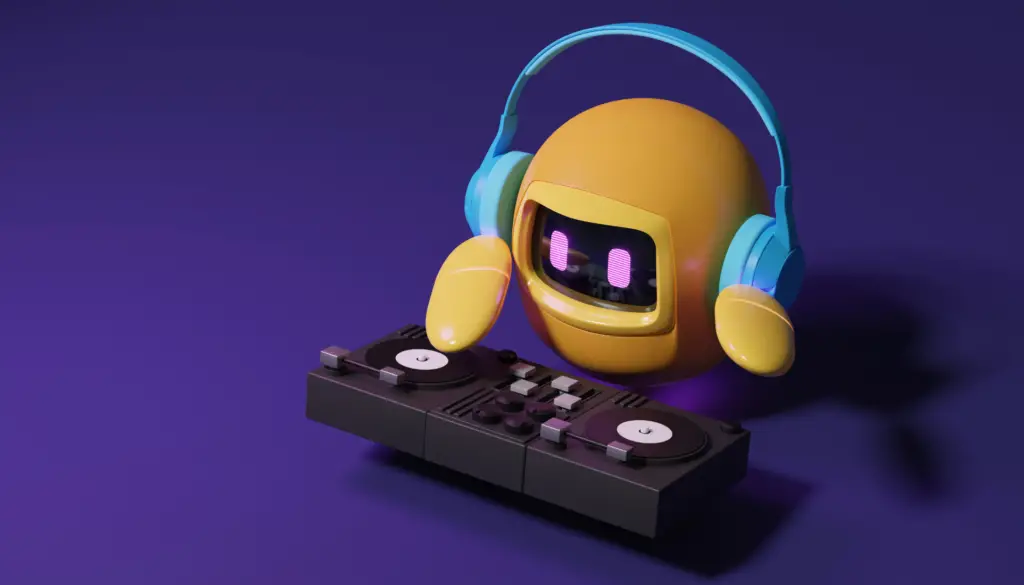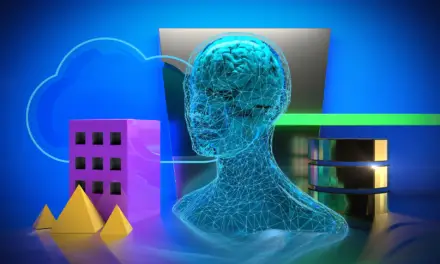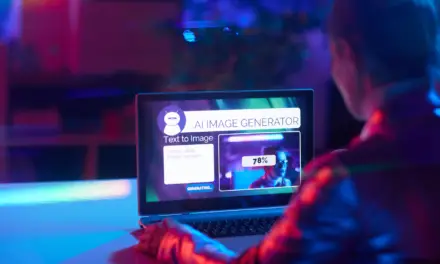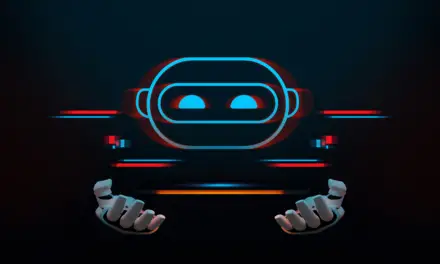In a world where we’re used to asking Siri to play our favorite tracks, there’s a new melody in town – and it’s not composed by human hands.
Ever wondered if a machine could tug at your heartstrings with a ballad, or get your foot tapping along to an infectious beat? If you have, you might find this interesting.
We’re at an intersection where Artificial Intelligence and music are about to revolutionize what we thought we knew about music and how it’s made.
In this article, we’ll look closely at how AI makes music, the types it’s best at making, what AI struggles with when making music, who owns what it creates and what the future holds.
Table of Contents
Can Artificial Intelligence Create Music?

Absolutely, Artificial Intelligence can create music, and it’s doing so in groundbreaking ways. Using algorithms and neural networks, AI can compose original pieces across genres—from classical symphonies to pulsating electronic beats. While it may lack the emotional intuition of a human composer, AI is capable of generating compositions that are complex, engaging, and emotionally resonant. It’s not just mimicking human creativity; it’s forging its own artistic path.
For anyone interested in playing around with some AI music-making software, I’d recommend giving Mubert a go. You can mess around with it for free and it’s one of the best AI music makers on the market.
Mubert offers a holistic approach with features tailored for content creators, artists, and even developers. Utilizing a robust library of millions of samples, its AI algorithms generate unique, royalty-free tracks in real time.
So whether you’re looking to effortlessly score your latest video with Mubert Render or want to integrate customizable, real-time music into your app with Mubert API, the platform has you covered. Plus, their app “Mubert Play” offers an immersive, personalized listening experience. It’s like a one-stop shop for all your musical needs.
Try out Mubert.com here
How Does AI Create Music?
You might have heard an AI song before and not even realized it. So how can artificial intelligence put together a piece of music that can actually resonate with a person? Let’s zoom into the hidden world of 1s and 0s, algorithms, and neural networks to understand how AI can compose music.
Algorithms and Neural Networks: The Unseen Composers
Algorithms in AI music composition serve as the backbone—the rulebook, if you will. They lay the groundwork for harmonies, rhythms, and chord progressions, often based on pre-existing musical theories or data sets of human-created music.
Whether it’s mimicking a Baroque composition or generating an ambient soundscape, algorithms serve as the initial set of instructions.
If algorithms are the rulebook, neural networks are the maestros interpreting it. Neural networks are sophisticated computational models inspired by the human brain. In music generation, neural networks often employ a specialized architecture known as Recurrent Neural Networks (RNNs), or their more advanced cousins, Long Short-Term Memory (LSTM) networks. These networks excel at understanding sequences, which is critical for capturing the temporal, evolving nature of music.
How Does AI Generate Music? A Brief Technical Overview
Data Ingestion: The first step involves feeding the neural network a dataset, often composed of hundreds or thousands of musical compositions. This data serves as the raw material that the neural network learns from.
Training the Model: During this phase, the neural network analyses patterns in the dataset, learning how melodies, harmonies, and rhythms interact. It essentially deciphers the ‘grammar’ of music.
Generation: Once trained, the neural network is ready to compose. Based on the rules and patterns it has learned, it can generate original compositions or even continue an unfinished musical piece.
Fine-Tuning: Algorithms can then fine-tune the composition, adding polish by tweaking elements like tempo, key, or instrument voice.
Human Intervention: Finally, musicians or sound engineers might step in for the last adjustments, imbuing the composition with the emotional nuance or thematic consistency that AI might still be grasping for.
By synergistically combining algorithms and neural networks, AI can create a musical output that is not just a parroted version of past compositions, but often something entirely new, novel, and emotionally compelling. So, the next time your food starts tapping along to a captivating melody, consider this: It might just be the work of a silicon-based virtuoso.
What Types of Music Can AI Create
Forget the notion that machines are rigid, one-note performers; when it comes to genre diversity, AI is versatile and quite the musical wizard.
The Genre Spectrum: From Classical to EDM
When it comes to the musical genres AI can tackle, think of it as an expansive jukebox rather than a one-trick pony. Classical music, often cited as one of the most complex forms of musical expression, has been an exciting frontier. Companies like AIVA Technologies have neural networks that generate full-fledged orchestral compositions.
But the AI repertoire doesn’t end with violins and cellos; it comfortably crosses over into jazz, blues, pop, electronic dance music (EDM), and even experimental noise.
Complexity and Emotional Resonance: Can AI Go Beyond Simple Melodies?
If you’re skeptical about AI’s ability to dive deep into musical complexity, you’re not alone; the question often arises, “Sure, AI can produce a tune, but can it go beyond rudimentary melodies?” The short answer is: yes, it can.
Advanced models now manage to incorporate intricate polyphonic textures, layered harmonies, and rhythmical complexities that mimic or even innovate upon human compositions.
The emotional resonance is trickier. While AI might lack the lived experiences that infuse human compositions with deep emotional gravitas, advancements in machine learning have made it increasingly adept at mimicking the emotional ‘tone’ of a piece, whether it’s a mournful ballad or an uplifting anthem.
To illustrate, consider OpenAI’s Jukebox, a neural network that creates music complete with lyrics. It doesn’t just assemble a string of notes; it crafts a comprehensive musical experience that can rival a talented musician.
So, are we on the cusp of an AI-composed Grammy winner? That’s yet to be seen. But what is clear is that AI is musically articulate across genres and complexities, and its capabilities are expanding at a rate that could make even the most accomplished human musicians take note.
What AI Struggles With When Creating Music
The machine-generated magnum opuses can still hit a few sour notes that make them fall short of human-composed masterpieces. Let’s turn down the volume on the hype and look at the areas where AI still struggles to make music.
Nailing the Nuances: A Genre-Specific Challenge
The first hiccup? The subtlety and finesse of genre-specific production techniques often elude AI composers. For instance, the sonic textures in a hip-hop track differ drastically from a country ballad, and AI doesn’t always get these nuances right.
The result? AI-generated samples that sound, as some critics describe, “plasticky” or “hollow,” lacking the organic richness that a human touch imbues.
Mixing and Mastering Woes
You’ve composed a tune, but what makes it radio-ready? Mixing and mastering—a finely-tuned process that human professionals have mastered over decades. AI’s final mixes often miss the sonic depth and balance that make a song suitable for its intended genre.
Whether it’s equalizing the bass or refining the treble, the machine-generated end product often sounds a tad ‘off.’
Song Structure and Transitions: Where Complexity Trips AI
While algorithms might craft decent standalone sections, stringing them together into a cohesive, flowing song is another ballgame. Most genres require intricate changes throughout the structure—a verse transitioning seamlessly into a chorus, for example.
AI finds this difficult, and it’s often more adept at composing music that is ‘progressive’ in nature, such as ambient tracks. These genres forgive the machine’s less sophisticated transitional capabilities.
So, while AI can belt out a tune or even craft a complex symphony, it still hasn’t fully grasped the artistry involved in the finer aspects of music production. It’s like a talented musician who can play all the right notes but hasn’t yet learned how to pour soul into them.
The question then isn’t just whether AI can create music, but how close it can come to matching the emotional and technical depth that human musicians offer.
Who Owns AI Created Music?
As AI becomes an increasingly prominent composer, the crescendo of “Who owns the rights?” reverberates louder than ever.
Related Article: Can Artificial Intelligence Create The Next Wonder Material? (Explained)
The American Overture: “No Copyright for Machines”
In the United States, the stage is set by the Copyright Office, which strikes a discordant note with AI composers. According to them and at the time of writing this, if a machine or AI system produces a work, it can’t be registered for copyright. In this view, creativity is a uniquely human trait, and only works produced by humans can claim ownership. This leaves AI compositions in a sort of legal limbo, a no-man’s-land of intellectual property.
The European Ensemble: A Different Tune
Across the pond, the European Union has a different view. According to EU regulations, AI-generated works can indeed be copyrighted, provided they exhibit “sufficient originality.” This sets the stage for a fascinating dynamic where an AI-generated composition could be copyrighted in Europe but remain public domain in the United States.
A Real-world Case
The rise of AI-generated music has opened up a Pandora’s box of questions for copyright law. In one of the most publicised cases to date, a TikTok user generated a song mimicking the style of Drake and The Weeknd using AI, it sparked controversy and was swiftly removed from platforms like Spotify and TikTok. The incident has led legal experts to weigh in on AI generated music and copyright law.
According to current U.S. Copyright Office guidelines, a work created by AI without human intervention doesn’t qualify for copyright protection. This poses the question of whether an AI-generated song like the one created by the TikTok user can be copyrighted at all.
On the other hand, Drake and The Weeknd’s record label, Universal Music Group, took immediate action to remove the song, claiming it violated their artists’ copyright rights. This raises another point of debate: Can AI-generated material infringe upon the rights of human authors?
There are two main issues: the rights AI-generated material itself has and the rights someone might assert against AI-generated material. The current Copyright Office stance limits AI’s rights since only humans can be considered authors according to constitutional and statutory copyright grants. Yet, this hasn’t been fully tested in courts, and the laws will most likely evolve.
There are further issues surrounding the training of AI models. Does training an AI model with existing copyrighted material constitute infringement? When AI generates a work based on that training, is it creating a derivative work that only the original copyright owner has the right to make? Both questions remain unresolved and complicated.
The AI-generated song also opens up possible arguments around fair use and the right of publicity. Given the song’s removal, one could argue that it was likely removed under the Digital Millennium Copyright Act (DMCA) guidelines, although the specifics are not entirely clear.
As AI continues to affect the music industry, a legal system will have to evolve to keep pace with these changes. While statutory changes to the Copyright Act seem unlikely, court rulings could play a critical role in shaping the future of AI and copyright law. The situation underscores the need for a balanced approach that safeguards both the rights of artists and the scope for innovation.
The Future of AI in Music: What’s Coming Next?
As we stand at the crossroads of innovation and creativity, what does the future hold for AI in the music industry? Let’s dive into the melodies of tomorrow as we explore the potential advancements, challenges, and harmonies that await in the future of AI in music.
Next-Gen Algorithms: Striking New Chords
One thing is clear: the algorithms powering AI’s musical abilities are far from their final composition. Research is pouring into developing neural networks that understand the emotional context behind music.
Imagine AI not just replicating the melancholy of blues or the exuberance of a pop song but actually “understanding” and innovating within those emotional frameworks. With advancements in Natural Language Processing and emotional AI, we’re inching closer to creating a machine that could potentially write the next heart-wrenching love ballad or an anthem of rebellion.
Collaborative Symphonies: AI as the Ultimate Sidekick
The role of AI will likely shift from being a solo artist to becoming an invaluable collaborator for human musicians. Picture this: You hum a tune into your AI-powered software, and it instantly extrapolates an entire orchestral score, suggests modifications for emotional depth, or even advises on how to make it more commercially palatable. AI could democratize music creation, turning every shower singer into a potential composer.
Personalized Sonic Experiences: The AI DJ
Could the future see AI crafting music that is not just genre-specific but listener-specific? Think of an AI DJ that doesn’t just know your playlist but knows your mood, your tastes to an uncanny degree, and even your current emotional needs, serving up a personalized auditory experience that is far beyond the ‘algorithmic playlists’ we’re used to today.
The Cultural Impact: New Genres, New Dialogues
As AI becomes an integral part of the music landscape, we may even witness the birth of entirely new genres—AI-inspired or even AI-originated. What does that mean for the broader cultural dialogue? The questions around authenticity, representation, and artistry will undoubtedly take center stage, igniting debates that challenge our very understanding of art and creativity.
The next few years are likely to be a rollercoaster ride in AI’s journey through the corridors of melody, rhythm, and emotion. So, buckle up; this ride isn’t just about technology—it’s about the future of human expression itself. And that is a playlist you won’t want to miss.



